 Iran’s Attack on Israel
Iran’s Attack on Israel
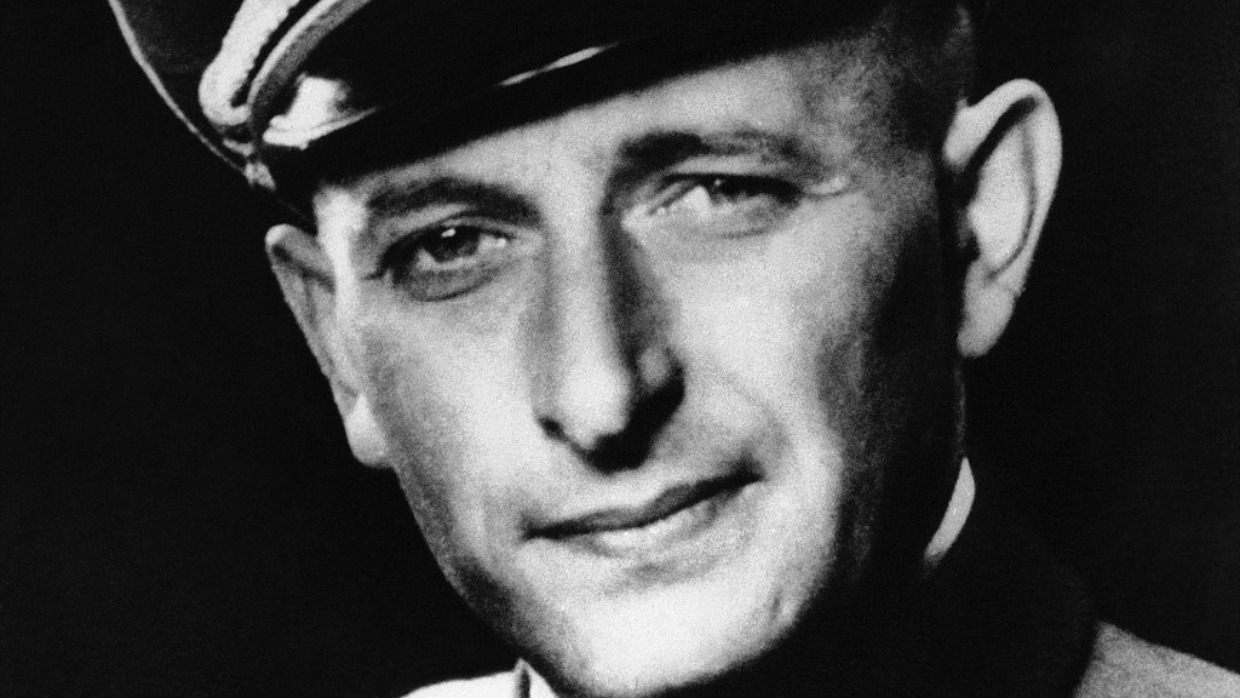

9 min read
Secret files reveal 9,000 Nazi war criminals fled to South America after WWII.
After 1945 the scale of the horror of the Holocaust came to light. Faced with unprecedented cruelty, much of the world responded with unprecedented vigor. The new term “crimes against humanity” was coined in the subsequent Nuremberg trials, as Allied lawyers called senior Nazis to account.
Yet fewer than 300 Nazis faced judgment in the Nuremberg trials while up to 9,000 Nazis by some counts were spirited away from Europe after World War II, helped by sympathetic agents and friends. Many found new lives in South America. By the late 1940s, much of South America, particularly Brazil, Chile and Argentina, was a haven for thousands of Nazis eluding justice. German prosecutors in recent years have estimated that Brazil accepted between 1,500 and 2,000 Nazis, Chile took in between 500 and 1,000, and Argentina welcomed up to 5,000 Nazis to their country.
Many South American countries were home to large communities of ethnic Germans during and after World War II. In many cases, these communities were sympathetic to and even welcomed Nazis, helping them to evade justice. In the mid-1980s, it was estimated that 3.6 million of Brazil’s 130 million citizens, one million out of Argentina’s 28 million people, and 200,000 out of 3.5 million citizens of Paraguay were ethnically German. “Many of them maintain the language and traditions of their forefathers,” the New York Times noted in 1985. “Because of their strong cultural identity, the older German farming communities in southern Brazil and southern Paraguay have often been accused of harboring Nazis. In 1962, the Chilean town of Colonia Dignidad was found to be home to 300 families who’d fled Germany after World War II, finding a welcome – and no questions asked – among their compatriots in South America.”
In 1955, Gen. Alfredo Stroessner, a grandson of immigrants from Bavaria, opened Paraguay to former Nazis. In the 1930s, Brazil had the biggest Nazi party in the world after Germany, with 40,000 members; many of these Brazilian Nazis welcomed German Nazis after the war. In Argentina, future president Juan Peron spent part of the war, from 1939 to 1941, working in Argentina’s embassy in Italy and openly admired the politics of Benito Mussolini and Adolf Hitler. When Peron became President of Argentina in 1946, he ordered the establishment of secret channels – dubbed “ratlines” – to ferry thousands of Nazis from ports in Spain and Italy out of Europe and into Latin America.
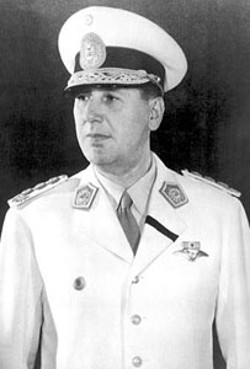 Juan Peron
Juan Peron
Historian Uki Goni, in his 2002 book The Real Odessa: Smuggling the Nazis to Peron’s Argentina, documents that in 1946 Juan Peron sent secret word to France that Nazi officials facing prosecution at home would find a welcoming haven in Argentina. The “Odessa” theory, popularized in the 1972 novel The Odessa File and 1974 movie of the same name, was that a secret group of former SS officers had banded together and was helping former Nazi officials to escape post-war Europe. While there was no “Odessa” group, the truth was far stranger: some of the most senior officials in governments, the Catholic church and aid organizations actively worked to help Nazis escape justice, often sending them to South America.
Peron’s key point man in creating a pipeline for Nazis was the Argentinian Cardinal Antonio Caggiano. He passed along Peron’s top-secret message to a Cardinal in France, who communicated with Nazis living in France, helping usher them to Argentina. Peron invested considerable manpower in smuggling Nazis to Argentina, even setting up a secret office in Bern to help handle the paperwork. In Spring 1946, the first French Nazis began receiving Argentinian tourist visas and setting sail for South America.
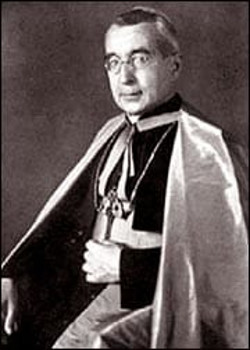 Alois Hudal
Alois Hudal
Many of these Nazis escaping to South America were aided by Catholic officials. Some merely wanted to help Catholics escape from the rising Communist governments in central Europe. Other officials, however, were actively anti-Semitic and desired to help Nazis elude justice. One of the highest ranking Catholic officials who aided Nazi criminals was Bishop Alois Hudal, an Austrian-born admirer of Hitler. Bishop Hudal worked in Rome, ministering to Axis POWs, and tirelessly aided war criminals by providing them with false Vatican-issued identity papers allowing them to gain passports from the International Red Cross and travel to South America.
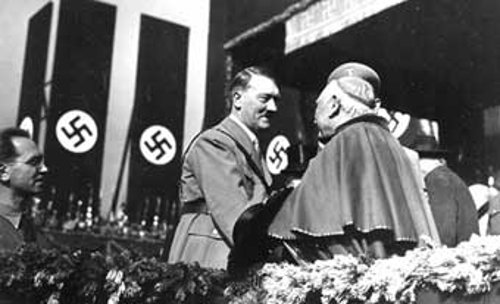
Bishop Hudal worked with a network of officials throughout Europe; it was he, with the aid of a Franciscan friar in Italy, who provided false papers that allowed senior Nazi Adolf Eichmann to sail for Argentina. Hudal’s activities helping “refugees” (many of whom were Nazis evading justice) garnered him much praise and financial support. The American Catholic Bishops Conference even approved a monthly stipend of $200 to Bishop Hudal to help him in his work.
The work of Bishop Hudal and other Catholic officials to help Nazis flee was an open secret. A 1947 memo sent from the United States’ Italian embassy noted that “The Vatican of course is the largest single organization involved in the illegal movement of emigrants” out of Europe in those years.
Bishop Hudal and other Catholic officials had a willing accomplice in Carl Jacob Burckhardt, President of the International Red Cross in the years after World War II. In his 2011 book Nazis on the Run: How Hitler’s Henchmen Fled Justice, historian Gerald Steinacher chronicles Burckhardt’s anti-Semitism, as well as his penchant for helping Germans, including former Nazis. It’s hard to know just how many former Nazis fled Europe using false Red Cross papers; in 2012, German lawyers, after examining recently declassified archives, estimated that thousands of Nazis were similarly able to obtain false Red Cross passports. About 800 SS members were able to flee to Argentina alone using these false documents.
One Nazi who fled to Argentina was Horst Wagner, who aided in the deportation and murder of at least 350,000 Jews. Wagner’s story would have remained unknown were it not for the efforts of German family therapist turned author Gisela Heidenreich, whose mother Edith met and fell in love with Horst Wagner during the war. In 2012, Ms. Heidenreich published a work documenting Wagner’s escape from justice, Beloved Criminal: A Diplomat in the Service of the Final Solution. After escaping from an Allied-run jail in 1948, Wagner followed a path dubbed the “Kloster Line”, receiving sanctuary in convents and churches in Austria before heading to Rome. There, Bishop Hudal helped him obtain false papers and sail to Argentina.
Franz Stangl, the commander of the extermination camps of Sobibor and Treblinka who oversaw the murder of nearly one and a half million Jews, was another senior Nazi Ms. Heidenreich uncovered who followed the same path. Stangl was aided by Catholic church officials and eventually fled to Brazil on a false Red Cross passport. Stangl was eventually extradited to Germany in the 1960s and died in jail. Wagner met a different fate: he was never extradited and lived to old age in the Argentinian town of Bariloche, near Patagonia where he celebrated at weekly get-togethers in local beer halls, singing Nazi songs with other SS comrades who called Argentina home.
In addition to being ideologically sympathetic to Nazi ideology, Juan Peron also had a financial motive in bringing so many Nazis to his country. In 2005, drawing on government archives that had just been declassified, German journalist Gaby Weber found that Peron systematically used his government to launder money belonging to Nazi-owned companies, whose profits would otherwise have been seized as part of criminal investigations. In The German Connection: The Laundering of Nazi Money in Argentina, Ms. Weber estimates that value of the money laundering operation at well over one billion dollars.
A Mercedes-Benz plant in the suburbs of Buenos Aires might have been the center of the program bringing German wealth and former Nazis to Argentina, Ms. Weber uncovered. Adolf Eichmann worked at the plant, first under his own name, and later under an alias. According to Ms. Weber, Eichmann might have worked as a paymaster, “financing the movement and flight to Argentina” of other Nazis, before he was captured by Israeli forces in 1960, tried, and executed in 1962.
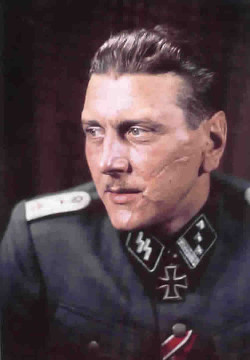 Otto Skorzeny
Otto Skorzeny
Otto Skorzeny, an SS commander who was known as Hitler’s favorite Nazi commando, is another senior Nazi figure who might have arranged for other Nazis to find homes in South America. Escaping from an Allied prison in 1947 with the help of local pro-Nazi citizens, Skorzeny moved to Madrid, where he ran an import/export agency that was rumored to be a front for organizing the escape of Nazis to South America. Skorzeny made numerous trips to Argentina, eventually working for a time as a bodyguard to Juan Peron’s wildly popular second wife, Eva, known as Evita.
Evita seems to have been an enthusiastic helper of Nazis in her own right. She was reported to have been romantically involved with Skorzeny, and also might have been active in laundering money from German Nazis. In 2011, Brazilian authors Leandro Narloch and Duda Teixeira wrote, “It is still suspected that among (Eva Peron’s) possessions, there were pieces of Nazi treasure that came from rich Jewish families killed in concentration camps.”
Nazis who eluded justice to find a haven in South America include
The Torah commands “Justice, justice shall you pursue” (Deuteronomy 16:18). A generation ago, thousands of Nazis eluded justice by fleeing to South America. Today, as a new generation of historians delving into archives and other records, the truth about how so much of South America became a Nazi haven is being uncovered. It’s too late to try most of these Nazi war criminals but their victims, and all of us, deserve to know the truth about this dark chapter in South America’s past.

Beyond the US Military "Operation Paperclip" the "Rat Line" was supported by the catholic Church.
The "Colonia Dignidad" in Chile is ethnically German, but Follower to an USA Preacher "William M. Branham". Wikipedia, "William M. Branham", Section "Branhams Followers."
The German active Branch is "Freie Volksmission Krefeld" with now Preacher "Ewald Frank". Chile put 2005 a nine year travel ban on him.
It should be noted, that Jim Jones, The peoples Temple with 909 dead in Jonestown 1978 originates from Branham, Wikipedia Jim Jones.
Paul Mckenzie, Good News International Ministries, Kenia 2023, with more than 400 dead, belongs also to Branham, Wikipedia Good News International Ministries.
There are links between Nazi right extreme and strange right wing Christians.
Thank you very much for the documentation. I had always one question on this subject: There were also many jews who fled to South America. How was this for jews being again with nazis in the same area?
Thank you for this well-documented article! As always, well written, well argued and thorough.
Today's Argentina for today's Nazi's is Qatar...
I was always was generally aware that there was a pipeline for Nazis to settle in South America, especially knowing the difficulties that the Iaraelis had in bringing Eichmann to stand trial in Israel. The specifics of each case still makes the whole thing shocking. On another note, antisemitism has always been there. What is unfolding today has very deep roots.
I worked at a company for 20 years that employed a number of South Americans, from many of the countries listed in this article, they were not the grandsons or granddaughters of former Nazis but the did tell me that a number of their history books that were used in their schools alluded to the contributions that these Nazis made to their countries! They also told me that they were taught that Hitler himself ended up in South America but died in 1955 of what in later years became known as Parkinson’s disease.
So pathetic! Would like to hear what the United States did. I thought they brought many in as well.
Don’t know the whole story but I do know that the US brought in people whose technical and/or scientific knowledge/skills were considered to be valuable in the “fight” against communism. If they were also Nazis this was deliberately suppressed - and in fact many were.
read up on operation "Paperclip" if you want to know more about the US using Nazi brainpower after the war
Thanks!